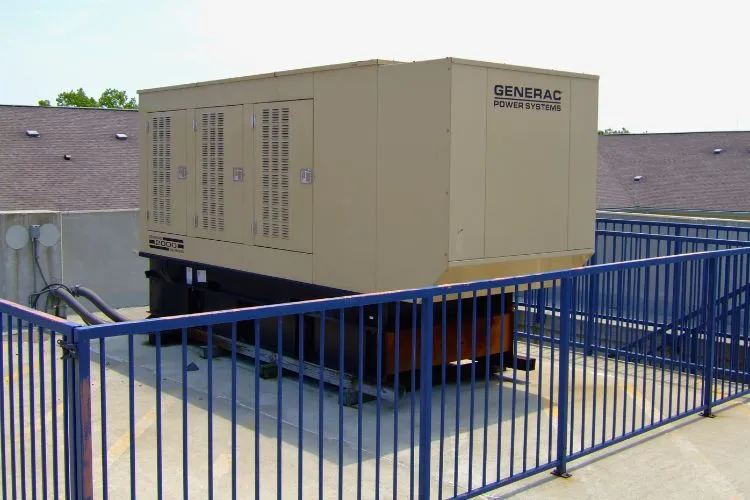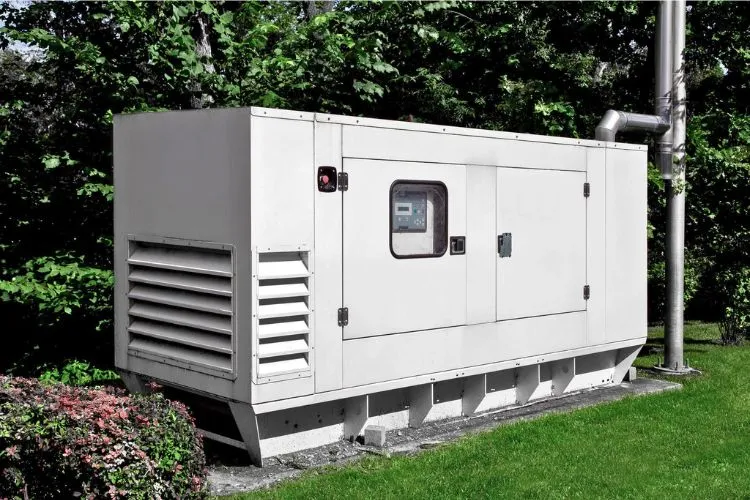In our world today, the reliance on an uninterrupted power supply has become more than a convenience; it’s a necessity.
Backup generators stand as silent sentinels, ready to spring into action the moment our electrical grid fails, ensuring that our lives, businesses, and essential services keep running smoothly.
But, how do backup generators work in real world?
Let’s delve into the world of backup generators to understand their operations, types, and significance.

Understanding Backup Generators
Backup generators are devices that provide temporary electrical power by converting fuel into electricity.
They are designed to jump into action automatically or manually when the primary power source fails.
In situations such as power outages caused by storms, natural disasters, or technical failures, backup generators act as a critical lifeline.
Types of Backup Generators
Two main types of backup generators cater to different needs: portable and standby generators.
Portable generators are movable units that can supply electricity to critical devices and appliances. They are fueled by gasoline, diesel, or propane and are ideal for temporary, small-scale power needs.
Standby generators, on the other hand, are permanently installed systems that can power an entire home or commercial facility. They typically run on natural gas or propane and automatically power on during an outage.
How Do Backup Generators Work?
The operation of backup generators involves several key components and a series of well-coordinated steps.
The Fundamental Components
At the heart of a backup generator is the engine, powered by various fuel types. It drives the alternator, which produces the electrical output.
The fuel system supplies the engine with the necessary fuel, while the voltage regulator controls the output voltage.
Cooling and exhaust systems keep the generator from overheating and vent exhaust gases safely.
The battery charger keeps the starter battery ready, and the lubrication system ensures smooth engine operation. The control panel serves as the user interface, displaying settings and outputs.
Step-by-Step Operation Process
When the power goes out, the generator’s transfer switch senses the loss of power and signals the generator to start. The engine then powers the alternator, creating electrical current.
This current is directed to the building’s electrical panel, providing power to the connected circuits.
Once the primary power is restored, the transfer switch automatically reverts the electrical supply back to the main line, and the generator shuts off, ready for the next outage.
Fuel Types and Their Effects
The type of fuel a generator uses affects its operation, cost, and storage. Diesel and natural gas are common for standby generators due to their reliability and long-term fuel storage capabilities.

Propane, while also reliable, requires a tank large enough to ensure an adequate supply. Gasoline, though convenient for portable generators, has a shorter shelf life.
Bi-fuel and solar-powered generators offer environmentally friendly alternatives but with their own set of limitations and needs.
Maintenance of Backup Generators
Maintaining a backup generator is crucial for its reliability and longevity.
Regular maintenance tasks include oil and coolant level checks, air and fuel filter replacements, battery function tests, and scheduled operation runs.
Neglecting these tasks can lead to generator failure just when it’s needed most.
Safety Considerations
Safety is paramount when operating backup generators. Proper ventilation is necessary to avoid carbon monoxide poisoning, and regular inspections can identify potential hazards.
Generators should be placed away from windows and doors to prevent exhaust gases from entering buildings. Adhering to manufacturer guidelines and local regulations will further enhance safety.
Installation Considerations
Professional installation ensures that backup generators are set up correctly and comply with local codes.
Considerations include choosing a suitable location, adhering to noise ordinances, and ensuring the generator meets power requirements.
A professional can help determine the appropriate size and type of generator for your needs.
Environmental Impact and Efficiency
Backup generators, vital for emergency power, vary in their environmental impact based on fuel type and efficiency.
Diesel and gasoline generators emit higher levels of greenhouse gases and pollutants, contributing to air pollution and climate change.

Conversely, natural gas generators emit fewer pollutants but still impact the environment. Propane, although cleaner than gasoline and diesel, involves energy-intensive production processes.
Advancements in generator technology are focusing on reducing these environmental footprints. The development of more efficient engines and the use of renewable energy sources, like solar-powered and bi-fuel generators, are at the forefront.
These modern generators not only consume less fuel but also operate more quietly, reducing noise pollution. Furthermore, innovations like emission control systems and the integration of smart technology optimize fuel efficiency and monitor carbon output in real-time.
Such advancements promise a future where backup power solutions align more closely with global sustainability goals, reducing our reliance on fossil fuels and mitigating environmental impacts.
These steps towards eco-friendly alternatives represent a significant leap forward in harmonizing the need for reliable backup power with environmental stewardship.
Pro Tips
Consulting with a professional to assess your power requirements can guide you to the right generator. Establishing a maintenance plan is essential for dependable operation.
Additionally, installing carbon monoxide detectors in your home or business enhances safety for everyone.
Frequently Asked Questions (FAQs)
What is the average lifespan of a backup generator?
The lifespan varies by type and usage but averaging 20 to 30 years for standby generators with proper maintenance.
How often should a backup generator be tested?
Monthly testing under load is recommended to ensure reliability.
Can backup generators run continuously, and for how long?
While designed for temporary use, standby generators can run for extended periods, depending on the fuel supply and maintenance.
What is the difference between kW and kVA in generators?
kW refers to real power, while kVA indicates apparent power. The ratio between them is known as the power factor.
How do I determine the correct size of a backup generator for my needs?
Calculate the total power consumption of all devices and appliances you wish to run during an outage and consult with a professional.
Conclusion:
Backup generators are invaluable in ensuring power continuity during outages, providing safety, comfort, and security.
Understanding how backup generators work, their types, and the importance of proper maintenance can help individuals and businesses make informed decisions about their power backup needs.
With a reliable backup generator in place, you can rest assured that you’re prepared for whatever power disruptions come your way.
